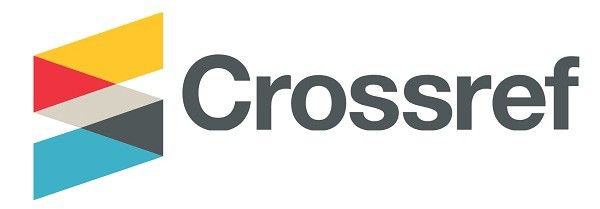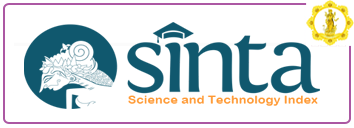Peningkatan Mutu Kecerdasan Spiritual dan Emosional Siswa Sekolah Dasar Melalui Pengembangan Model Siklus Belajar Catur Pramana
DOI:
https://doi.org/10.25078/jpm.v6i2.633Keywords:
Quality Improvement, Spiritual Intelligence, Emotional Intelligence, Elementary School Students, Catur Pramana Learning CycleAbstract
At present, multiple intelligence has become a major concern in the world of education, but it is still dominated by the intellectual development of students, even though in the era of the Industrial Revolution 4.0, spiritual intelligence and emotional intelligence were vital skills in preparing superior human resources. Preparation of superior human resources needs to start from an early age, especially in primary school education, so that the various intelligence and skills needed must be sown and developed systematically and sustainably from an early age. One way is to always improve the quality of learning through the development of appropriate learning models in accordance with the needs of developing superior human resources. One innovative learning model that is believed to be one of the ideal models for developing spiritual and emotional intelligence is the learning cycle model. Hindu religious teachings about the four ways of gaining knowledge and knowing God called Catur Pramana (Sabda, Anumana, Upamana and Pratyaksa Pramana) are predicted to be developed as a learning cycle model. The purpose of this research is to produce a model of the Catur Pramana learning cycle that is valid, practical and effective to improve spiritual and emotional intelligence. The research and development model used is the 4 D model (define, design, develop, and disseminate) according to Thiagarajan. The final score of the validity of the Catur Pramana learning cycle learning model by educational practitioners shows a category with an average instrument validity (ẋ) of 3.46. This data shows that the Catur Pramana learning cycle learning model developed has proper validity in terms of learning syntax and conformity to the curriculum. The effectiveness of the Catur Pramana learning cycle learning model can be measured based on the achievement of learning objectives and student development by implementing the Catur Pramana learning cycle learning model that has been developed. To determine the effectiveness of the Catur Pramana learning cycle learning model, it is done by assessing the level of spiritual intelligence and emotional intelligence of students through a questionnaire. The method used was pre-experimental with a one shot case study design. The research was conducted in 2 classes. From the two sample classes, each measurement will be carried out on students' spiritual intelligence and emotional intelligence.
Downloads
References
Ansar & Masaong. (2011). Manajemen Berbasis Sekolah. Gorontalo: Sentra Media.
Cooper, Donald R., dan Emory, William C. (1997). Metode Penelitian Bisnis. Jakarta : Erlangga
Cooper, R. K. & Sawaf, A. (2002). Executive EQ; Kecerdasan Emosi Dalam Kepemimpinan dan Organisasi. Jakarta: PT Gramedia Pustaka Utama.
Depdiknas .2001. Kamus Besar Bahasa Indonesia.Jakarta ;Balai Pustaka.
Djojonegoro, W. (1996). Lima Puluh Tahun Perkembangan Pendidikan Indonesia. Depdikbud
Fred Luthans, (2006). Perilaku Organisasi. Edisi Sepuluh. Yogyakarta : PT. Andi
Goleman, D. (2003). Emotional Intelligence (Terjemahan T Hermaya). Jakarta. PT. Gramedia Pustaka Utama.
Goleman, D. (2003). Kepemimpinan yang Mendatangkan Hasil, Cetakan Pertama, Amara Books, Jogjakarta
Goleman, Daniel. (1999). Working with Emotional Intelligence: Kecerdasan Emosi untuk Mencapai Puncak Prestasi (penerjemah Alex Tri Kantjo Widodo). Jakarta: Gramedia Pustaka Utama.
Hartini, H. M., Suminar, D. R., & Handoyo, S. (2001). Peran Pola Permainan Sosial Dalam Meningkatkan Kecerdasan Emosi Anak. Jurnal Penelitian Dinamika Sosial, 2(1), 66-72.
Mudjijo. (1995). Tes Hasil Belajar. Jakarta : Bumi Aksara.
Ormrod, J. E. (2008). Psikologi Pendidikan Jilid I. Jakarta: Penerbit Erlangga
Pendit, S. (2007). Filsafat Hindu Dharma: Sad-Darśana. Denpasar: Bali Post.
Rosenshine, B., & Meister, C. (1992). The use of scaffolds for teaching higher-level cognitive strategies. Educational Leadership, 49(7)p.26–33
Slavin, RE. (2000). Educational Psychology:Theory and Practice.Sixth Edition. Boston.: Allyn &Bacon
Stein, S. J. H. & Book. H. (2002). Prinsip Dasar Kecerdasan Emosional Meraih Sukses. Bandung: Kaif.
Suja, I W. & Wirta, I W. (2012). Implementasi Buku Ajar Bermuatan Konten Sains Asli dan Koteks Pedagogi Catur Pramana. Jurnal Pendidikan dan Pengajaran, 45(2).178-188
Suja, I W. (2008). Pengembangan Model Pembelajaran Kimia Berbasis Kearifan Lokal Catur Pramana. Wahana Matematika dan Sains. 5(9): 65-76.
Suja, I. W. (2009). Pengembangan Model Pembelajaran Kimia Berbasis Siklus Belajar Catur Pramana. Jurnal Pendidikan dan Pengajaran, 42(1 Apr).
Swinton, J. (2001). Spirituality and Mental Health Care: Rediscovering a 'Forgotten' Dimension. London and Philadelphia: Jessica Kingsley Publishers. p.25
Tasrif. (2008). Pengantar Pendidikan Ilmu Pengetahuan Sosial. Yogyakarta: Genta Press.
Thiagarajan, S., Semmel, D.S., Semmel, M.L. (1974). Instructional Development for Training Teacher of Exceptional Children. Minnesota: Indiana University.
Toto, T. (2011). Kecerdasan Ruhaniah Transcendental Intelligence Membentuk Kepribadian yang Bertanggungjawab Profesional dan Berakhlak. Jakarta: Gema.
Wibowo, B. S. (2002). Sharpening our Conceptand Tools. Bandung: PT Syamil Cipta Media
Winataputra, U. (2008). Teori Belajar dan Pembelajaran. Jakarta: Universitas Terbuka
Zohar D dan Marshall, S. (2007). SQ, Memanfaatkan kecerdasan Spiritual dalamBerpikir Integralistik dan Holistik untuk Memakai Kehidupan. Bandung: Mizan.









